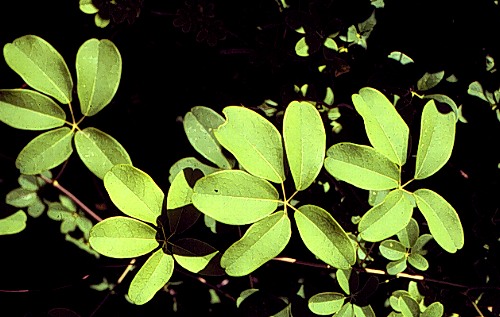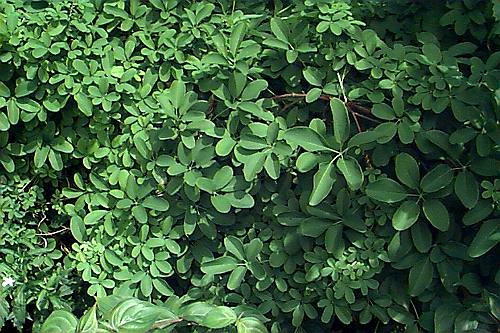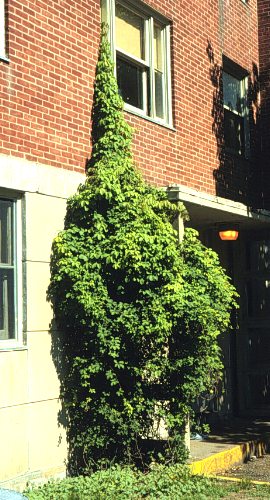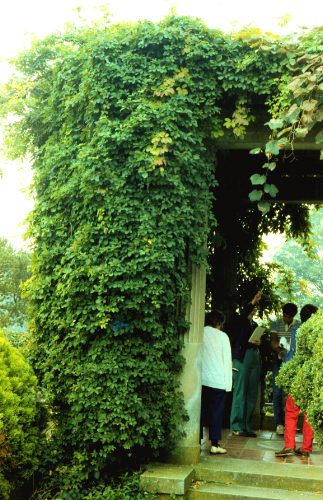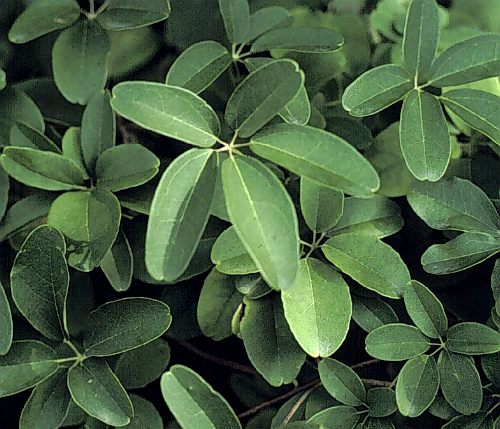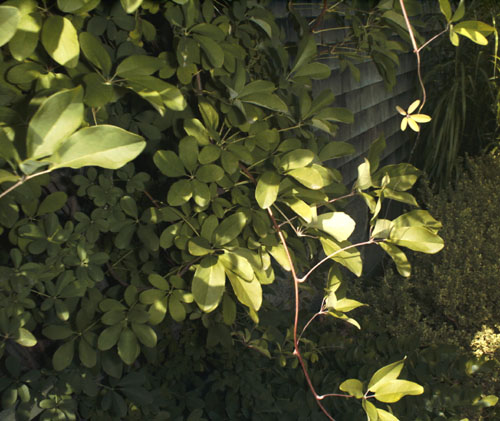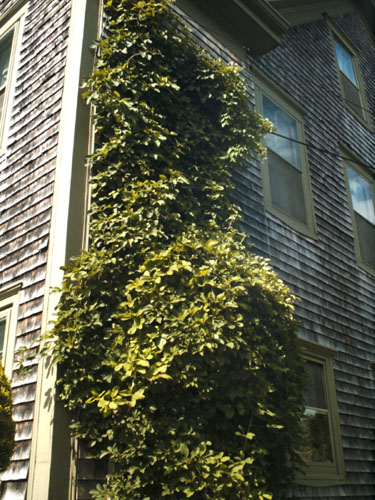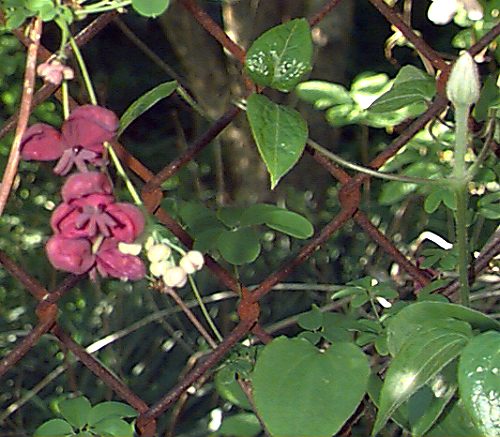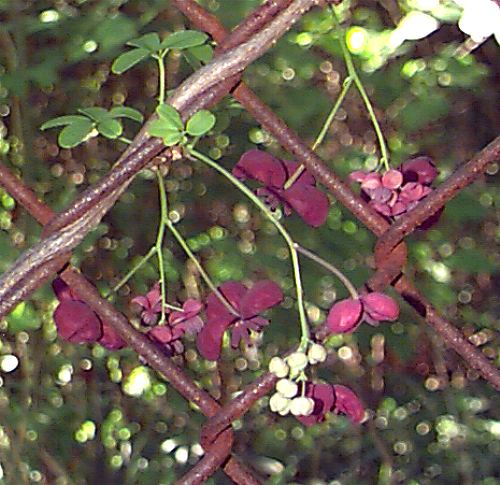Akebia quinata
Fiveleaf Akebia
Lardizabalaceae
ExpandHabitat
- native to China, Korea, and Japan
- hardy to 4
Habit and Form
- a deciduous to semi-evergreen twining vine
- deciduous in zones 4 through 6
- fine textured vine
- grows 20' to 40'
- can grow upright on a structure or along the ground as a groundcover
Summer Foliage
- alternate, palmately compound leaves
- 5 leaflets with rounded or notched leaf tips
- leaflets are up to 3" long
- leaves are 4" to 7" across
- new leaves emerge purple-tinged
- mature leaves an attractive blue-green
Autumn Foliage
- no fall color
Flowers
- small purple-brown flowers
- held in groups of 2 to 5
- blooms in mid-May or earlier
- flower color often gets lost amongst the foliage
- on close inspection, flower are interesting
- fragrant
- flowers with 3 petals (sepals)
Fruit
- sausage-shaped, purplish pods, about 2.5" to 4" long
- seldom sets fruit under cultivation
Bark
- not important
Culture
- prefers moist, fertile, well-drained soils
- tolerates many soil types
- full sun to partial shade
- easily grown
- needs a support such as a wire fence for upright growth
Landscape Use
- as a screen with upright support
- groundcover
- useful for high quality summer foliage
Liabilities
- can be a rampant grower
- flowers not as conspicuous as one would like
- may be hard to find in commerce
ID Features
- twining vine
- blue-green, palmately compound leaves
- leaflets with a notch at the tip
- purple-brown flowers
- sausage-like fruit
- leaves tend toward semi-evergreen
Propagation
- by softwood cuttings
Cultivars/Varieties
'Alba' and 'Leucantha' - White-flowered forms with white fruit.
'Purple Bouquet' (Purple Bouquet™) - Described as a more compact growing selection with purple blooms.
'Rosea' - Lighter purple flowers than the species.
'Variegata' - Foliage is variegated with white. The flowers are pale pink.
